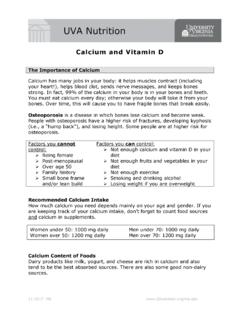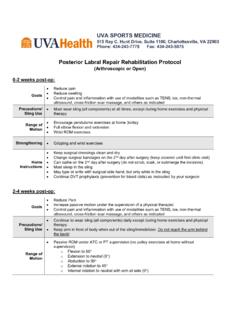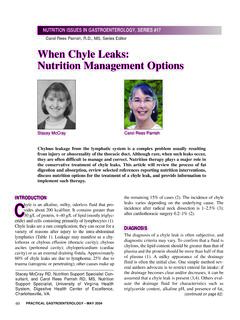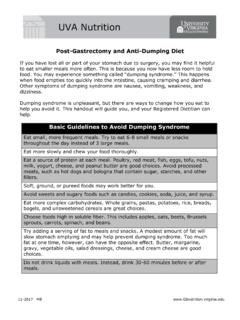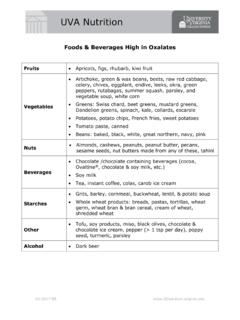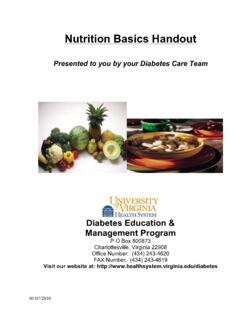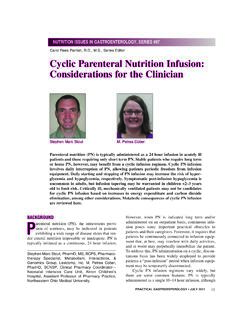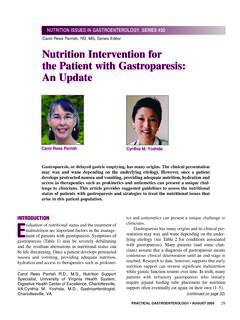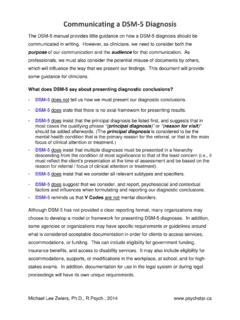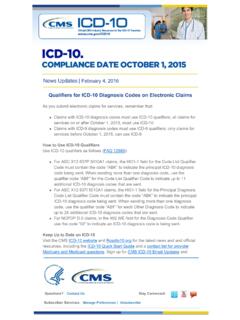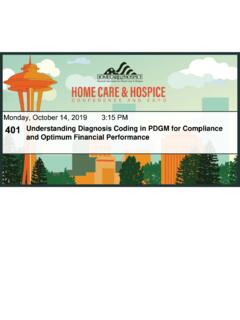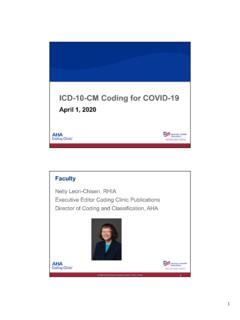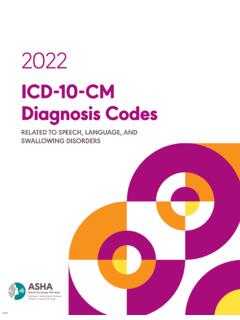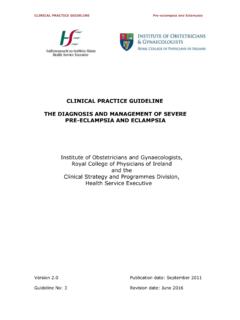Transcription of Codin for Malnutrition in the Adult Patient What the …
1 NUTRITION ISSUES IN GASTROENTEROLOGY, SERIES #133. Carol Rees Parrish, , , Series Editor Coding for Malnutrition in the Adult Patient : What the Physician Needs to Know Wendy Phillips At least half of all hospitalized patients are malnourished, which increases the duration of recovery, length of stay, as well as the resources spent to treat the Patient . Reimbursement to cover the additional costs may only be realized if the Malnutrition is identified, diagnosed, and treated by the physician while providing care for the primary illness. This article will discuss the importance of identifying and documenting Malnutrition in hospitalized patients , with practical tips for licensed independent practitioners to aid in this documentation.
2 INTRODUCTION. O. ver 50% of hospitalized patients are malnourished Not only is this unfortunate for our patients , but upon These nutrition deficits can lead hospital costs soar. Given the added cost to care for to muscle loss/weakness and, in turn, influence these patients , it is important to capture reimbursement the risk for falls, pressure ulcers, infections, delay in for this added co-morbidity from the insurance provider. wound healing, and increased hospital readmission Reimbursement may only be increased to cover these Malnutrition as a co-morbidity also increases costs if the Malnutrition is identified, diagnosed, and the duration of recovery from the primary illness and, treated by the physician in combination with providing in turn, the length of stay.
3 Finally, it not only adds to care for the primary illness. It is imperative that time in rehabilitation, but also increases the need for clinicians understand the criteria needed to identify and rehab after document Malnutrition in order to maximize nutrition interventions to ensure best outcomes, and also capture reimbursement for the additional care provided. The Wendy Phillips, MS, RD, CNSC, CLE, goal of this article is to help clinicians identify and Director, Nutrition Systems, University of document Malnutrition in hospitalized patients .
4 Virginia Health System, Charlottesville, VA (continued on page 58). 56 PRACTICAL GASTROENTEROLOGY SEPTEMBER 2014. Coding for Malnutrition in the Adult Patient : What the Physician Needs to Know NUTRITION ISSUES IN GASTROENTEROLOGY, SERIES #133. (continued from page 56). The inpatient prospective payment system through the same diagnosis and similar clinical characteristics the Centers for Medicare and Medicaid Services (CMS) are assigned to an MS-DRG and the hospital receives established Medicare Severity-Diagnostic Related a fixed payment amount based on the average cost Groups (MS-DRGs).
5 2 Using this system, patients with of care for patients in that group. In addition to the Table 1. ICD-9 and ICD-10 Codes for Malnutrition , available at ICD-9 ICD-10 ICD-9 Title ICD-10 Title Criteria/Description MCC/. Code Code CC. 260 E40 Kwashiorkor should Kwashiorkor should Nutritional edema MCC. rarely be used in the rarely be used in the with dyspigmentation of skin and hair 260 E42 Kwashiorkor should Marasmic kwashiorkor rarely be used in the should rarely be used in the 261 E41 Nutritional marasmus Nutritional marasmus Nutritional atrophy; severe MCC.
6 Should rarely be used should rarely be used Malnutrition otherwise stated;. in the in the severe energy deficiency 262 E43 Other severe protein- Unspecified severe Nutritional edema without MCC. calorie Malnutrition protein-calorie mention of dyspigmentation of Malnutrition skin and hair. 263 E44 Malnutrition of Moderate protein- No definition given CC. moderate degree calorie Malnutrition Malnutrition of mild Mild protein-calorie No definition given CC. degree Malnutrition E45 Arrested Retarded development CC. development following protein- following protein- calorie Malnutrition calorie Malnutrition E46 Other protein-calorie Unspecified protein- See below CC.
7 Malnutrition calorie Malnutrition E46 Unspecified protein- Unspecified protein- A disorder caused by a lack of CC. calorie Malnutrition calorie Malnutrition proper nutrition or an inability to absorb nutrients from food. An imbalanced nutritional status resulted from insufficient intake of nutrients to meet normal physiological requirement. Inadequate nutrition resulting from poor diet, malabsorption, or abnormal nutrient distribution. The lack of sufficient energy or protein to meet the body's metabolic demands, as a result of either an inadequate dietary intake of protein, intake of poor quality dietary protein, increased demands due to disease, or increased nutrient losses.
8 E64 Unspecified protein- Sequelae of protein- CC. calorie Malnutrition calorie Malnutrition 58 PRACTICAL GASTROENTEROLOGY SEPTEMBER 2014. Coding for Malnutrition in the Adult Patient : What the Physician Needs to Know NUTRITION ISSUES IN GASTROENTEROLOGY, SERIES #133. principal diagnosis that necessitated the hospital stay, Malnutrition , as defined by the Center for Disease the Patient may have additional conditions that increase Control and Prevention (see Table 2). Since the the resources needed to care for him/her. These are etiology of Malnutrition is often multifactorial, more known as either major complications or comorbidities than one assessment criteria should be considered when (MCCs), or complications or comorbidities (CCs).
9 The determining the degree of Malnutrition , including an hospital receives a higher reimbursement for MS-DRGs evaluation of dietary intake by the registered dietitian associated with a CC, and an even higher reimbursement (RD). However, only one assessment parameter for MS-DRGs associated with MCCs. This same system is required to determine the degree of Malnutrition is used to determine the Case Mix Index, which is a for the purpose of reimbursement. Regardless of the description of the level of severity of patients being classification system used, a policy needs to be created cared for at that hospital.
10 The International Classification for defining Malnutrition at each hospital. This policy of Disease, 9th Revision (ICD-9) codes translate should be used consistently amongst all disciplines for medical diagnoses into numerical codes for billing determining the degree of Malnutrition for each Patient and research purposes. Malnutrition is a qualifying who is admitted. Table 3 is an example policy that may diagnosis in the MS-DRG system, but several different be customized for use at a hospital. ICD-9 codes can be used for the varying degrees of Malnutrition .

